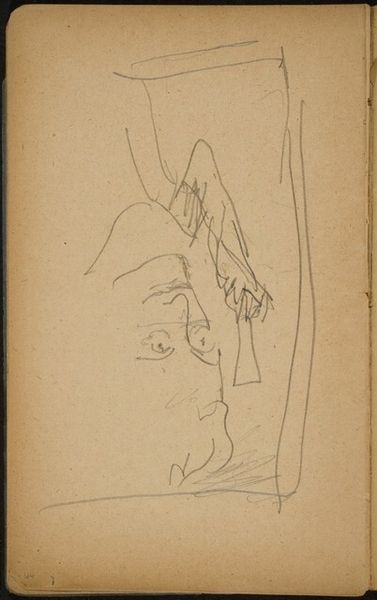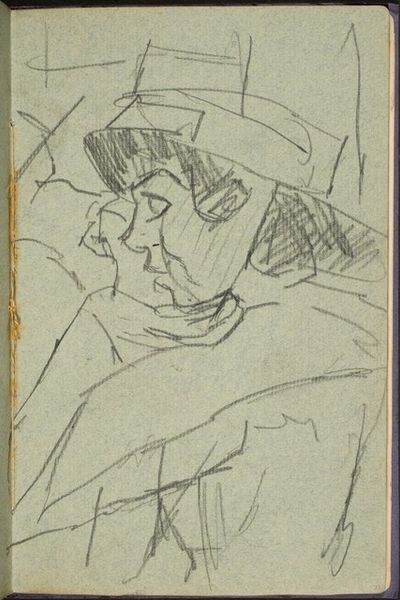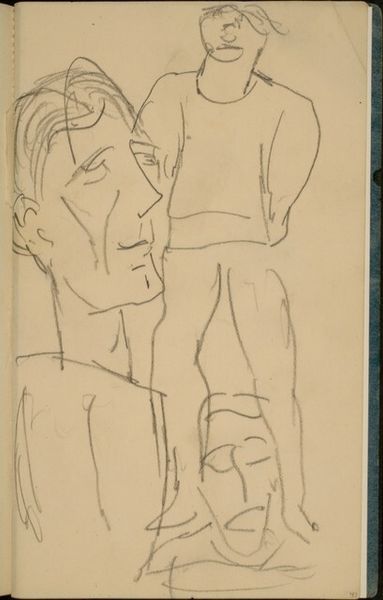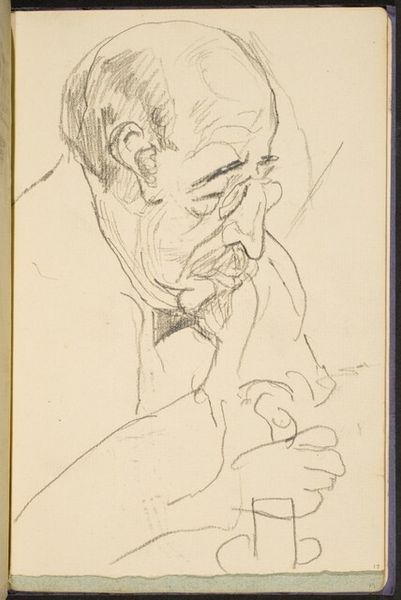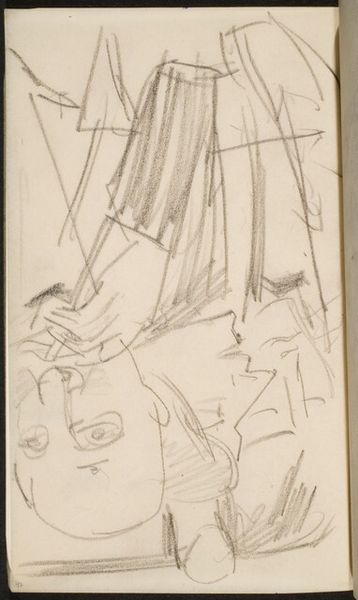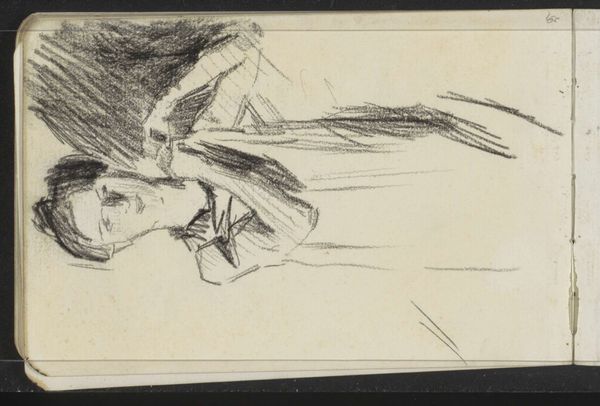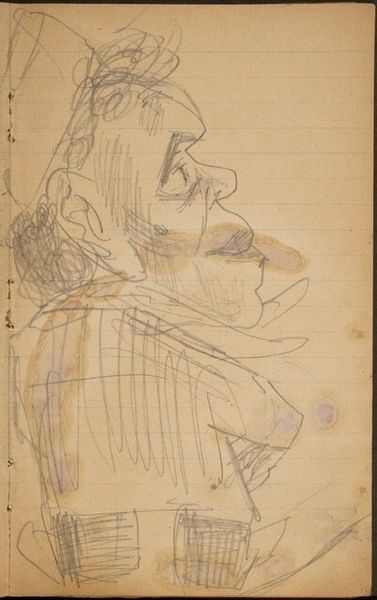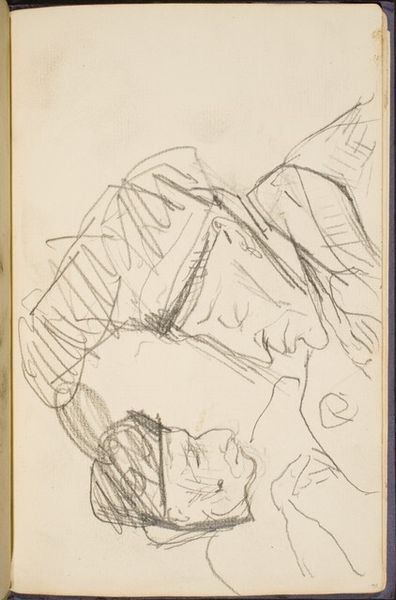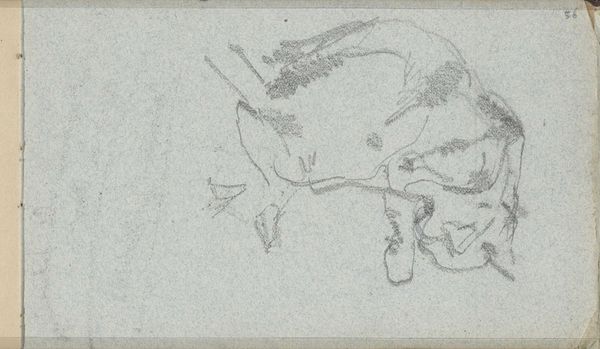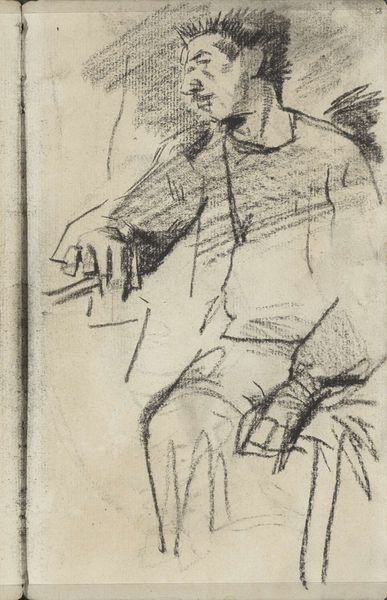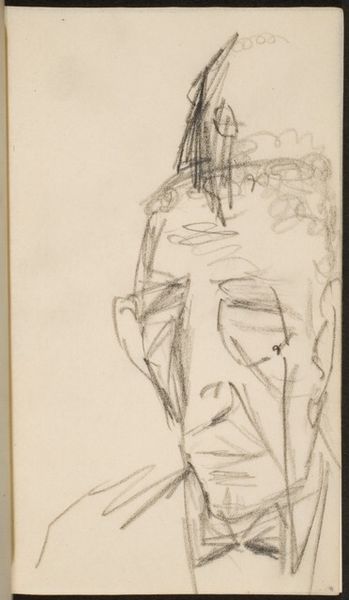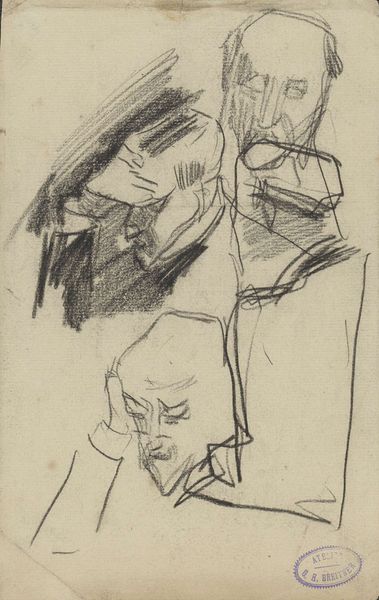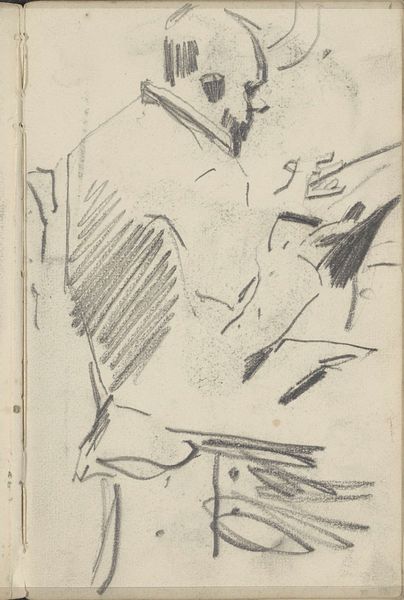![männliche Bildnisstudie (Male Portrait Study) [p. 7] by Max Beckmann](/_next/image?url=https%3A%2F%2Fd2w8kbdekdi1gv.cloudfront.net%2FeyJidWNrZXQiOiAiYXJ0ZXJhLWltYWdlcy1idWNrZXQiLCAia2V5IjogImFydHdvcmtzLzdlMWRjYjk1LWRlNTAtNDRiMS05YWFlLTRkZTRkNzFlZjA3Zi83ZTFkY2I5NS1kZTUwLTQ0YjEtOWFhZS00ZGU0ZDcxZWYwN2ZfZnVsbC5qcGciLCAiZWRpdHMiOiB7InJlc2l6ZSI6IHsid2lkdGgiOiAxOTIwLCAiaGVpZ2h0IjogMTkyMCwgImZpdCI6ICJpbnNpZGUifX19&w=1080&q=75)
drawing, pencil
#
portrait
#
drawing
#
german-expressionism
#
figuration
#
pencil
#
expressionism
Dimensions: sheet: 19.7 x 13 cm (7 3/4 x 5 1/8 in.)
Copyright: National Gallery of Art: CC0 1.0
Max Beckmann made this male portrait study with graphite on paper. The sketch might seem simple, but it emerges from a complex period in German history. Beckmann lived through World War I and the rise of Nazism. During this time, many artists felt a sense of disillusionment and alienation. We can see this reflected in his figures, which are often distorted and psychologically intense. The man in this sketch appears introspective, perhaps even troubled. The rough lines and lack of detail add to this sense of unease. Beckmann was part of the New Objectivity movement, which sought to depict the world in a realistic and unsentimental way. This was a reaction against the more romantic and idealistic art of the past. His art often commented on the social structures of his time, offering a critique of the powerful and the corrupt. Understanding the historical context can help us appreciate the depth and complexity of his work. By looking at letters, diaries, and other primary sources, we can gain a better understanding of the artist's intentions and the world in which he lived.
Comments
No comments
Be the first to comment and join the conversation on the ultimate creative platform.
